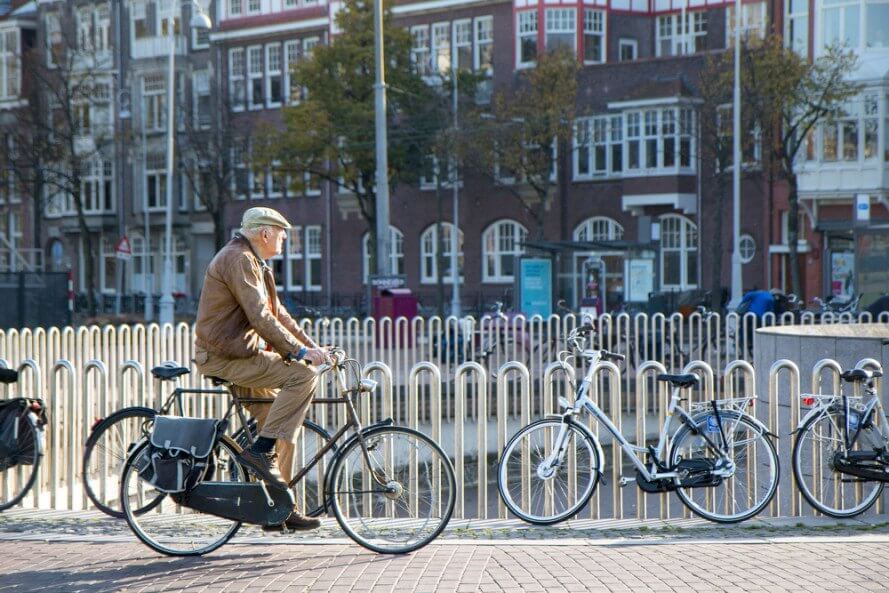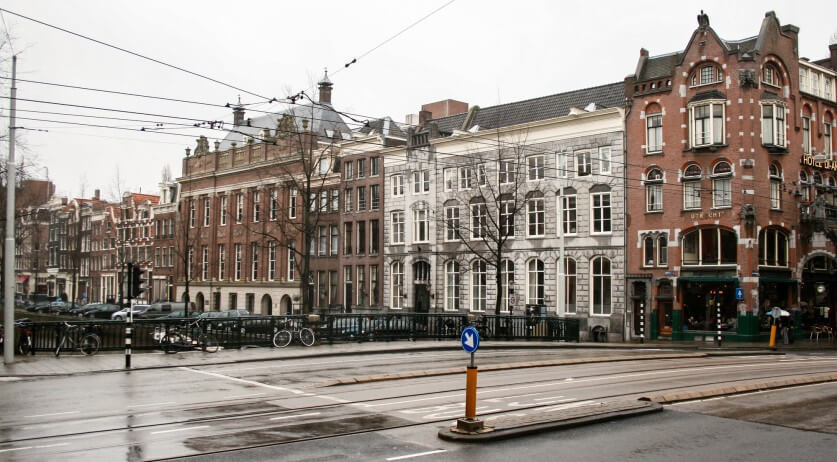People tend to be unfamiliar with the concept of the bike, except for the Dutch. So, here are 5 reasons why Amsterdam works so well for bikes.
All Roads Are Bicycle Roads

In most countries, the general road network for automobile traffic is much more extensive and well-developed than that for bicycle lanes and tracks.
In contrast, in Amsterdam, the roadway network map is the cycle network map as well. The local government provides excellent bicycle facilities on all streets.
Some roadways in Amsterdam don’t even allow cars to commute.
Divided Cycle Tracks, Not Bicycle Lanes – Reasons Amsterdam Works Well For Bikes

Now in the city, there are few on-road bicycle lanes left. And on higher-speed lanes, the government has raised standards and separated cycle tracks. This change provides a securer and more worry-free experience for cyclists.
This is a significant shift that has been borne out by long-term successful investigation in Amsterdam.
When Possible, Go Totally Car-Free

Maybe it’s a little bit soon to name this trend, but researchers in Amsterdam have started to alter “woonerfs” into shared roads that prevent cars from commuting completely. The term “woonerfs” in Dutch means “complete streets” in English, for your information.
An outstanding example is Plantage Middenlaan. This place once had sidewalks, bike trails, car lanes, and tram tracks. People then removed the car lanes. The remains include sidewalks, red bicycle lanes, and tram routes on grass. It has a lovely extended linear park as well.
Two Speeds, Both Slow – Reasons Amsterdam Works Well For Bikes

Amsterdam offers two-speed zones for all roadways, 18 mph, and 30 mph to be more specific.
It’s not about the driver’s willingness matter to obey the speed control law, but it is automatically attached to the planning and design of the road itself. Every device in the box is playing the role of traffic calming. For example, narrow streets, lifted intersections, textured pavement, tables, and speed bumps.
According to bikers, the speed tables that divide low-speed side lanes from higher-speed central lanes are an outstanding move. As a result, the fatality rate caused by traffic in Amsterdam is lower than in most other cities.
Worry-Free Intersections

The design of intersections for bikes in Amsterdam is kind of uncomplicated. It is partly because the matter of adapting to car traffic is not way too superior.
For instance, in Amsterdam, bicycle boxes are seldom used to accommodate cycles turning left at bigger junctions. Alternatively, the default format is to apply a two-phase system for left turns. First, a rider crosses a perpendicular road, then, they cross the second. Each road has its bicycle traffic sign. The entire process is clear and worry-free.
Related Posts You Can Read:
Things that shock tourists when they visit Amsterdam
